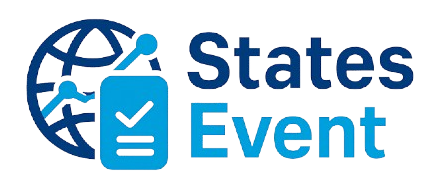The US FDA expects that as part of a product development Design Control Program risk management will be conducted. FDA also expects a post-production risk management program be implemented.
FDA recommends using ISO 14971 as a guide and has accepted it as a recognized standard.
One of the techniques described in ISO 14971 is Hazard Analysis. This is the most powerful of the risk management techniques because it considers risks in normal operation as well as fault conditions. FMEA and FTA consider only fault conditions and are more suited as reliability tools than as product safety tools.
In this seminar we will explain in detail the process of conducting a hazard analysis. The confusing terms “hazard”, hazardous situation”, “harm”, “causative event”, “ALARP”, “risk index”, “benefit/ risk ratio”, and “residual risk” will be explained. We will go step by step through a template for risk analysis so that the process is clear. Examples of hazards and hazardous situations will be discussed. How to deal with residual risk will be discussed.
We will explain how to integrate Human Factors studies into the Hazard Analysis and how to integrate Hazard Analysis into the design program. Risk level can determine the extent of CAPA investigations, validations effort, etc.
Application of ISO 14971 principles to software risk management will be explained.
WHY SHOULD YOU ATTEND?
FDA expects that as part of a product development program risk management will be conducted and risks will be mitigated as far as practical. Risk Analysis is required in a FDA product submission.FDA recommends using ISO 14971 as a guide and has accepted it as a recognized standard. Hazard Analysis is the most powerful of the risk management tools described in ISO 14971 but it is very confusing. Many new concepts are introduced. We will explain these concepts and provide examples so that the process is clear.
Handouts are hazard analysis forms and HA report template.
LEARNING OBJECTIVES
- Explanation of Hazard Analysis terms: hazard, hazardous situation, harm, risk
- Explanation of the hazard analysis process using a template
- Examples of terms will be given
- Hazard analysis examples will be covered step by step
WHO WILL BENEFIT?
- Engineer
- Engineering Manager
- Regulatory Personnel
- QA
FDA expects that as part of a product development program risk management will be conducted and risks will be mitigated as far as practical. Risk Analysis is required in a FDA product submission.FDA recommends using ISO 14971 as a guide and has accepted it as a recognized standard. Hazard Analysis is the most powerful of the risk management tools described in ISO 14971 but it is very confusing. Many new concepts are introduced. We will explain these concepts and provide examples so that the process is clear.
Handouts are hazard analysis forms and HA report template.
- Explanation of Hazard Analysis terms: hazard, hazardous situation, harm, risk
- Explanation of the hazard analysis process using a template
- Examples of terms will be given
- Hazard analysis examples will be covered step by step
- Engineer
- Engineering Manager
- Regulatory Personnel
- QA
Speaker Profile
 Edwin Waldbusser
Edwin Waldbusser
Edwin Waldbusser, is a consultant retired from industry after 20 years in management of development of medical devices (5 patents). He has been consulting in the areas of design control, risk analysis and software validation for the past 8 years. Mr. Waldbusser has a BS in Mechanical Engineering and an MBA. He is a Lloyds of London certified ISO 9000 Lead Auditor and a member of the Thomson Reuters Expert Witness network.
Upcoming Webinars

Treating Employees Like Adults: Discipline versus Empowerme…

7 Ways To Beat Burnout: Without Quitting Your Job


How to Write Procedures to Avoid Human Errors

Ethical Terminations: Navigating Employee Exits with Legal …

Understanding EBITDA – Definition, Formula & Calculation

Handbook Overhaul 2026: Compliance, OBBB Act & Beyond

FDA Proposes Framework to Advance Credibility of AI Models

Project Management for Non-Project Managers - Scheduling yo…

Data Integrity and Privacy: Compliance with 21 CFR Part 11,…


4-Hour Virtual Seminar on Hidden Secrets of Selling & Marke…

Validation Statistics for Non-Statisticians

Work Shouldn’t Feel Like A Soap Opera: Less Drama. More Foc…

Offboarding with Care: Conducting Legal & Ethical Employee …


The Alphabet Soup: When the FMLA, ADA, COBRA, and Workers' …

2-Hour Virtual Seminar on How to Conduct an Internal Harass…

Managing Toxic & Other Employees Who have Attitude Issues

Payments Fraud Detect & Prevent Check, ACH and P-Card Schem…

Reduce Stress in the Workplace: Effective Ways to Handle Co…

Language is Code - Intro to AI - Generative AI - ChatGPT an…


GROUPBY and PIVOTBY functions. Pivot table killers?





How to Prepare for a Regulatory Inspection: FDA, EMA, and N…

Excel - Reporting Simplified - Learn Pivot Tables from Scra…


The Power of Trust: Why It Should Matter to All Leaders & H…

California Meal and Rest Breaks: What You Don't Know Can Co…


How to Reduce Human Error in a GMP Manufacturing Floor

2-Hour Virtual Seminar on the 6 Most Common Problems in FDA…

Maximizing Productivity with ChatGPT: AI Solutions for HR, …

Excel - Pivot Tables - The Key To Modern Data Analysis and …

Re-imagine Finance & Accounting Made Simple. Three Webinars…

Form W-9 Compliance to Avoid Penalties: TIN Verification, B…

21 CFR Part 11 - Compliance for Electronic Records and Sign…

New EEOC Report: Workplace Harassment Prevention Not Workin…

Transforming Change and Conflict into Diverse-Inclusive-Col…

ChatGPT and Project Management: Leveraging AI for Project M…

Excel Power Skills: Master Functions, Formulas, and Macros …

Construction Lending And Real Credit Administration: Evalua…

Develop People Intelligence: Is Your Communication Style as…
